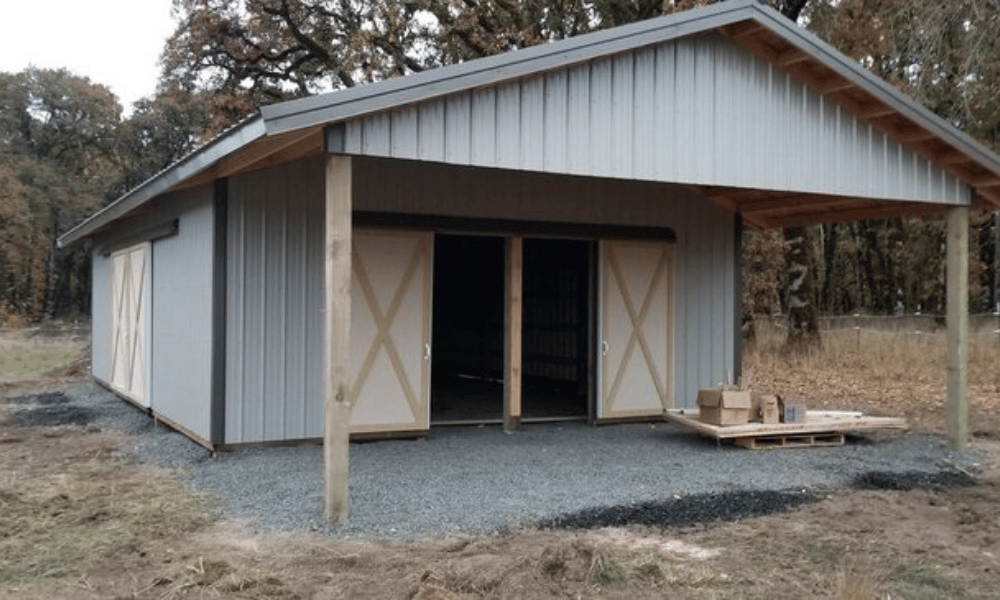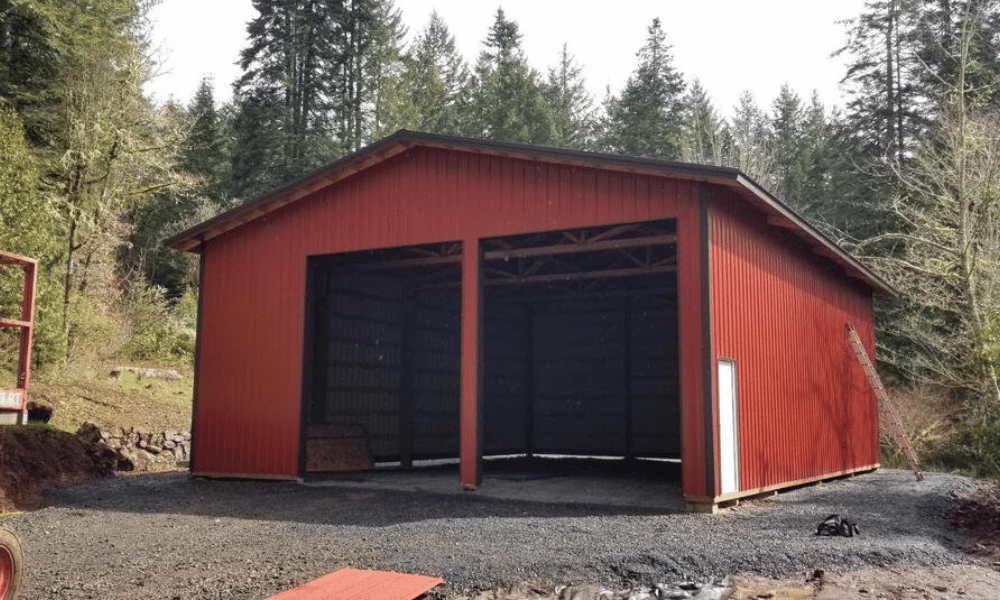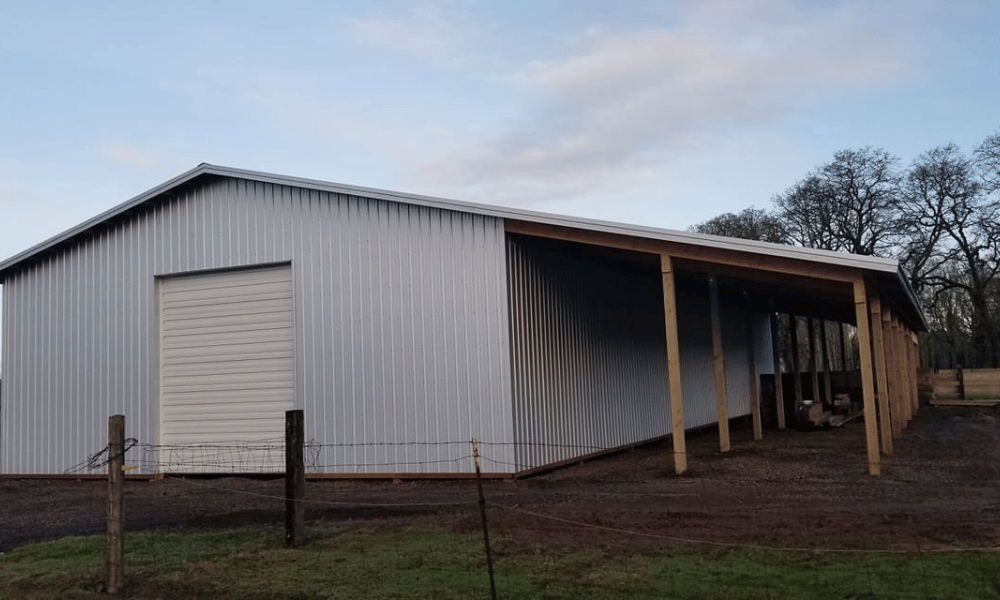Introduction
Building outdoors can be an exhilarating venture. Whether you're dreaming of a cozy pole barn, a spacious patio, or an intricate garden shed, planning is crucial to ensure your project goes smoothly. But where do you start? What should you keep in mind before breaking ground?
In this comprehensive guide, we’ll explore “Ten Important Factors To Consider When Planning To Build Outdoors!” We'll delve deep into practical considerations, from location and design to budget and permits. By the end of this article, you'll be well-equipped with the knowledge needed to make informed decisions about your outdoor building http://damiennupo722.fotosdefrases.com/the-economic-impact-of-choosing-a-pole-building-on-your-farm project.
1. Understand Your Purpose: What Do You Need the Space For?
Before diving headfirst into construction plans and material choices, take a moment to reflect on the purpose of your outdoor build. Are you looking for storage solutions with a pole barn? Or perhaps you want to create a beautiful outdoor living area for entertaining guests?
Identifying Your Needs
It's essential to outline what functions this space will serve. Here are some questions that might help clarify your intentions:
- Will it be used for storage or as a workshop? Do you envision hosting gatherings or family events? Are there specific activities like gardening or crafting that will take place here?
By answering these questions, you'll lay down a strong foundation for your project by ensuring all aspects cater to its intended use.
Creating a Wish List
Once you've identified the purpose, consider creating a wish list! This list could include features like:
- Electrical outlets Lighting solutions Windows for natural light Ventilation options
This exercise not only helps you visualize what you want but also aids in discussions with contractors and builders later on.
2. Location Matters: Where Will You Build?
Choosing the right location is critical when planning an outdoor build. The site can dictate everything from accessibility to aesthetic appeal.
Assessing Your Property
Look closely at your property and consider factors such as:
- Sunlight: Ensure your space will receive adequate sunlight throughout the day. Access: How easy is it to get materials in and out of the area? Proximity to Utilities: Are there existing water lines or electrical sources nearby?
Considering Local Regulations
It’s important not just to think about aesthetics but also local zoning laws and regulations that may affect where you can build. Some municipalities have restrictions based on property lines and setbacks.
3. Budgeting Wisely: How Much Can You Afford?
Let’s face it—money talks! Having a clear budget will help guide your decisions throughout the entire process.
Creating a Detailed Budget Plan
When budgeting for building outdoors, consider all potential costs:
Materials (wood, nails, insulation) Labor (contractors or DIY) Permits and inspections Utility hookups (if required)Setting Aside Contingency Funds
Always set aside at least 10% of your total budget as a contingency fund for unexpected expenses that may arise during construction.
4. Design Considerations: How Will It Look?
Aesthetic appeal plays an essential role in any building project. After all, who doesn’t want their new space to look great?
Choosing the Right Style
What style speaks to you? Whether it’s rustic charm with wooden beams or modern sleekness with metal accents, consider how well these styles complement your home and landscape.
Function Meets Form
While aesthetics are crucial, remember that functionality should not be sacrificed at the altar of beauty. Design elements like layout should serve practical purposes while also being visually appealing.
5. Materials Matter: What Will You Use?
The choice of materials in any outdoor construction project can significantly impact durability and maintenance needs.
Exploring Material Options
Consider using traditional wood for warmth or durable metal for longevity. If you're thinking about constructing a pole barn, timber frames can provide excellent structural integrity while keeping costs reasonable.
Pros and Cons Table: Common Materials Used in Outdoor Builds
| Material | Pros | Cons | |------------------|---------------------------|---------------------------| | Wood | Aesthetically pleasing | Susceptible to rot | | Metal | Highly durable | Can be expensive | | Vinyl | Low maintenance | Limited color options | | Concrete | Very sturdy | Heavy; difficult to modify |
6. Permits & Regulations: What Do You Need?
Before swinging a hammer or pouring concrete, it's vital to understand what permits are required by local authorities.
The Importance of Permits
Failing to obtain necessary permits could result in fines or having to demolish unapproved structures later on down the line—definitely not something anyone wants!
Navigating The Permit Process
Here are steps typically involved in obtaining permits:
Research local regulations. Submit drawings/plans. Pay associated fees. Schedule inspections post-construction if required.7. Environmental Impact: Is It Sustainable?
With increasing awareness around climate change and environmental issues, it’s essential to consider how your outdoor construction will affect nature around you.
Eco-Friendly Building Practices
Utilizing sustainable materials like bamboo or reclaimed wood is an excellent way to minimize environmental impact while still achieving aesthetic goals.
Sustainable Practices Checklist
- Utilize recycled materials. Incorporate energy-efficient designs. Plan for water conservation (rain barrels).
8. Weather Conditions: Preparing for Nature's Challenges
Weather plays an undeniable role in outdoor builds—especially if you're considering constructions like pole barns which need robust weatherproofing!
Understanding Local Climate Patterns
Take time researching climate patterns in your area so you know what environmental challenges might arise:
Heavy rains? Snow loads? High winds?Knowing these factors allows you to plan accordingly by choosing resilient materials and designs suited for local conditions.
9 Designing for Functionality: What Features Should You Include?
In addition to aesthetic appeal, it's vital that every design feature serves its intended function effectively without overcrowding the space!

Essential Features Checklist
Here are some must-have features worth considering:

10 Future-Proof Your Build: What About Expansion?
Thinking ahead can save headaches down-the-road! Creating adaptable spaces ensures they continue serving their purpose as needs evolve over time rather than becoming obsolete quickly after completion!
11 Planning Flexibly
Consider designing spaces that allow easy expansions such as adding more rooms later on without tearing everything apart completely! For instance if constructing pole barns opt-in for removable partitions separating areas rather than solid walls limiting open layouts drastically restricting adaptability later on!

FAQs
Q1: What type of foundation is best for my outdoor build?
A foundation depends on several factors including soil type; common options include concrete slabs & piers designed specifically based upon weight supported above ground level while ensuring stability against shifting conditions below ground level too!
Q2: Do I need professional help when planning my construction project outdoors?
While some projects may lend themselves well towards DIY approaches others require expertise especially regarding technical aspects e.g., electrical work plumbing etc., hiring professionals ensures safety compliance with established standards preventing costly mistakes along way!
Q3: How long does it usually take complete an outdoor building project from start finish usually took around X months depending complexity scale involved overall design chosen!
Q4: Can I use recycled materials when building my outdoor structure?
Absolutely! Using recycled materials not only helps reduce waste but often provides unique character making structure stand out amongst traditional builds too!
**Q5 : Are there specific warranties available covering different types structures built outdoors ? Yes many manufacturers offer warranties covering defects labor associated products used during construction depending terms outlined agreement signed between parties involved ensuring peace mind knowing investment safeguarded adequately against unforeseen circumstances arising unexpectedly !
**Q6 : Should I consider landscaping options surrounding new installation once completed ? Absolutely landscaping helps enhance overall aesthetic appeal tying together elements seamlessly blending environment enhancing enjoyment experience overall usage functionality enjoyed within newly created space outdoors !
Conclusion
Building outdoors doesn’t have to be daunting if approached thoughtfully; understanding key factors mentioned herein lays groundwork success paving path smooth sailing ahead! Remember attributes associated with each step taken throughout process contribute final outcome ultimately resulting vision materialized effectively satisfying desires needs envisioned initially set forth beginning journey undertaken exploring possibilities opened up through careful deliberation decision-making made along way towards creating ideal space desired yielding fruitful results observed over time spent enjoying surroundings made available previously unattainable without proper planning executed thoroughly beforehand! So go ahead get started today – happy building everyone!!